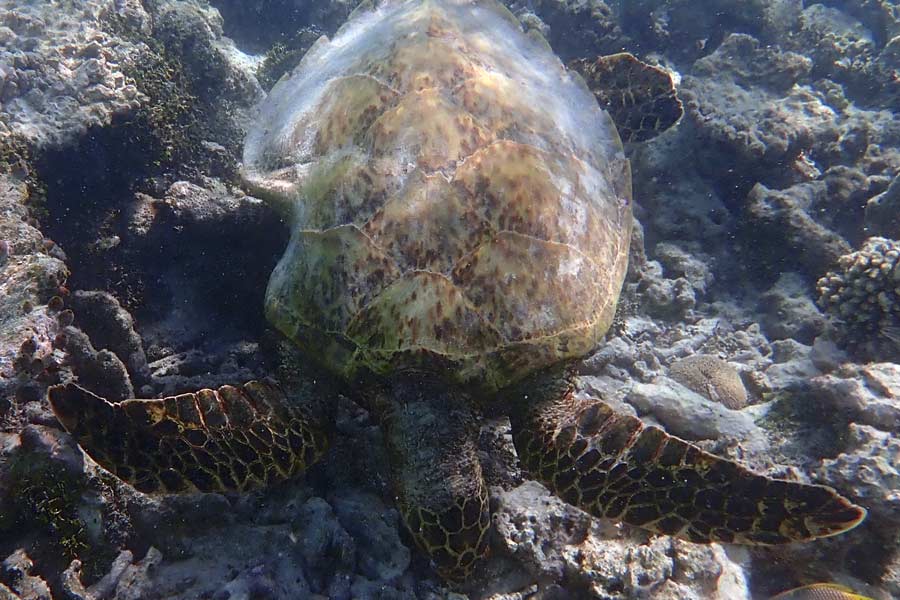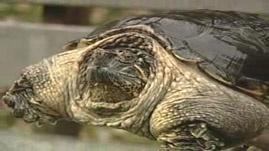Sea turtles protect themselves by using their hard shells and strong swimming abilities. Their shells act as natural armor against predators in the ocean.
Sea turtles also rely on their camouflage and agility to evade threats in their environment. These adaptations help them survive in the vast and sometimes dangerous marine ecosystem. In addition, sea turtles have a unique way of protecting themselves by nesting on remote beaches, where they can lay their eggs away from potential predators.
By combining physical defenses with strategic behaviors, sea turtles have evolved effective mechanisms to ensure their survival in the wild.

Credit: oliveridleyproject.org
Physical Adaptations
Sea turtles have evolved various physical adaptations to protect themselves from predators and survive in their marine environment. These adaptations include their shell structure and camouflage abilities, which are essential for their defense and survival.
Shell Structure
The shell of a sea turtle is a vital physical adaptation that provides protection from predators. It consists of two main parts, the carapace, which covers the back of the turtle, and the plastron, which shields the underside. The shell is composed of bony plates and connective tissue, providing strength and flexibility. This unique structure helps sea turtles withstand attacks and collisions, ensuring their survival in the ocean.
Camouflage Abilities
Sea turtles possess remarkable camouflage abilities that allow them to blend into their surroundings and avoid detection by predators. Their coloration and patterns help them to camouflage effectively in different marine environments. This adaptation enables sea turtles to evade predators and increase their chances of survival in the vast ocean.

Credit: www.pbslearningmedia.org
Behavioral Defense Mechanisms
Sea turtles have developed a variety of behavioral defense mechanisms to protect themselves from predators and environmental threats. These defense mechanisms are essential for their survival in the wild.
Migration Patterns
Sea turtles exhibit remarkable migration patterns, traveling thousands of miles between feeding and nesting areas. This behavior helps them avoid predators and find suitable environments for nesting and feeding.
Nesting Habits
Sea turtles have specific nesting habits, often returning to the same beaches where they were hatched to lay their eggs. This behavior reduces the risk of predation and ensures the survival of future generations.
Predator Avoidance Strategies
Sea turtles employ various predator avoidance strategies to protect themselves in their ocean habitat. These include camouflage, hiding in underwater vegetation, and quick swimming movements to evade predators. Additionally, their hard shells act as a protective barrier against potential threats.
Sea turtles are fascinating creatures that have been around for millions of years. They are known for their unique life cycle, migratory behavior, and nesting habits. However, despite their toughness, sea turtles face many predators in the ocean. Therefore, they have developed various predator avoidance strategies to protect themselves. In this blog post, we will discuss some of the most common predator avoidance strategies sea turtles use, focusing on the subheading: Avoiding Predatory Fish .Avoiding Predatory Fish
Sea turtles are vulnerable to a variety of predatory fish, such as sharks, barracudas, and groupers. To avoid these predators, sea turtles have developed several strategies. Firstly, they swim in a zigzag pattern to make it difficult for the predator to catch them. Secondly, they can hold their breath for a long time and hide in the reef or under rocks to avoid detection. Thirdly, they can use their powerful flippers to swim away from predators quickly.Interaction With Marine Mammals
Sea turtles also interact with marine mammals, such as dolphins and killer whales. Although these mammals are not predators of sea turtles, they can still harm them accidentally. For example, dolphins may accidentally hit a sea turtle with their tail while swimming. To avoid such interactions, sea turtles have developed the ability to sense the presence of marine mammals and avoid them.Conclusion
In conclusion, sea turtles have developed various predator avoidance strategies to protect themselves from predators in the ocean. They use their natural abilities, such as swimming and holding their breath, to avoid detection. Additionally, they avoid interacting with marine mammals to prevent accidental harm. By understanding these strategies, we can appreciate the resilience of these amazing creatures.
Credit: greentumble.com
Role Of Habitat In Protection
Sea turtles have developed various mechanisms to protect themselves from predators and environmental threats. One crucial aspect of their defense is the role of their habitat in providing protection. The specific characteristics of their habitats, such as coral reefs and seagrass beds, play a vital role in safeguarding these magnificent creatures.
Coral Reefs As Safe Havens
Coral reefs serve as vital shelters for sea turtles, offering protection from predators and strong ocean currents. The intricate structure of coral reefs creates numerous hiding spots where sea turtles can seek refuge and rest. Additionally, the diverse marine life within coral reefs provides an ample food supply for sea turtles, ensuring their sustenance and overall well-being. The vibrant ecosystem of coral reefs contributes significantly to the protection of sea turtles, allowing them to thrive in these dynamic underwater environments.
Importance Of Seagrass Beds
Seagrass beds play a crucial role in the protection of sea turtles, serving as essential foraging grounds and nurseries for young turtles. The dense, underwater meadows of seagrass provide an abundant food source for herbivorous sea turtles, enabling them to feed and grow within a relatively safe environment. Furthermore, the intricate structure of seagrass beds offers concealment from predators, allowing sea turtles to navigate and forage without constant exposure to potential threats. These vital habitats contribute significantly to the overall protection and survival of sea turtles in their marine ecosystems.
Human Threats And Conservation Efforts
Human activities pose significant threats to sea turtles, including pollution and habitat destruction. However, concerted conservation efforts are being made to mitigate these threats and protect these gentle creatures. Let’s delve into the impact of pollution and the conservation measures that are being implemented to safeguard sea turtles.
Impact Of Pollution
Pollution, especially plastic waste, poses a grave danger to sea turtles. They often mistake plastic bags for jellyfish, a staple in their diet, leading to ingestion and choking. Additionally, oil spills and chemical pollutants can contaminate their natural habitats, impacting their health and reproduction.
Conservation Measures
- Beach Cleanups: Organizations and volunteers conduct regular beach cleanups to remove debris and plastic, reducing the risk of ingestion by sea turtles.
- Habitat Protection: Efforts are being made to preserve and restore nesting beaches and critical foraging areas for sea turtles.
- Regulations: Governments and conservation groups are implementing regulations to reduce plastic usage, fishing practices, and coastal development in sea turtle habitats.
- Education and Awareness: Raising awareness about the impact of pollution and the importance of sea turtle conservation is crucial in garnering public support and participation in conservation efforts.
Future Challenges
Sea turtles protect themselves from future challenges by using their hard shells as a shield against predators. They also have the ability to blend into their surroundings, making it difficult for predators to spot them. Additionally, their strong swimming skills help them escape from danger.
Sea turtles have been around for millions of years, but their future is uncertain. Despite their remarkable survival skills, they are facing several challenges that could threaten their existence. In this section, we will discuss two of the most pressing challenges: climate change effects and balancing tourism and conservation.Climate Change Effects
Climate change is having a significant impact on sea turtles and their habitats. Rising temperatures are affecting the sex ratio of hatchlings, with more females being born than males. This could lead to a decline in the population if there are not enough males to mate with. Sea level rise is also a concern, as it could destroy nesting beaches and reduce the amount of suitable habitat for sea turtles. Extreme weather events such as hurricanes and cyclones can also destroy nests and disrupt migration patterns.Balancing Tourism And Conservation
Tourism can be both a blessing and a curse for sea turtles. On the one hand, it can raise awareness about these magnificent creatures and generate revenue for conservation efforts. On the other hand, it can also lead to habitat destruction, pollution, and disturbance of nesting sites. To balance tourism and conservation, it’s essential to have strict regulations in place to protect sea turtles and their habitats. Tourists should be educated about the impact of their actions on sea turtles and encouraged to follow best practices such as not leaving trash on the beach, avoiding bright lights at night, and not touching or disturbing nesting turtles. In conclusion, sea turtles are facing several challenges, but with the right conservation efforts, we can ensure their survival for generations to come. It’s up to all of us to do our part in protecting these magnificent creatures and their habitats.Conclusion
To sum up, sea turtles employ various defense mechanisms to safeguard themselves in their marine habitats. From their hard shells to camouflage abilities, these remarkable creatures have evolved sophisticated ways to ensure their survival in the vast ocean. Understanding their protective strategies is crucial for conservation efforts.





Leave a Reply